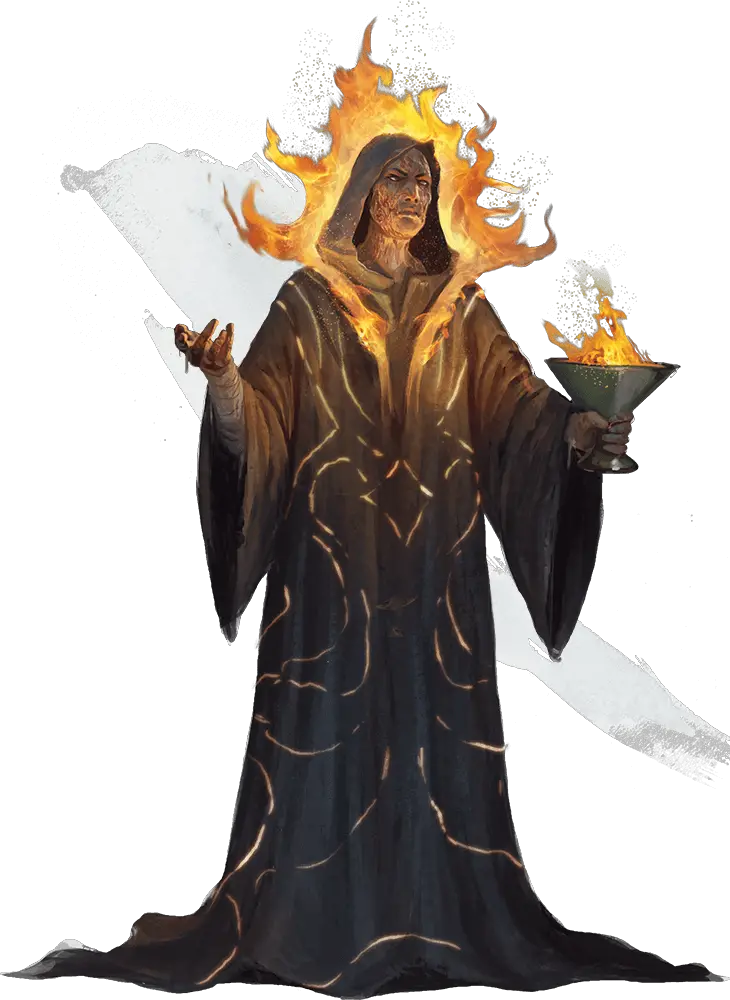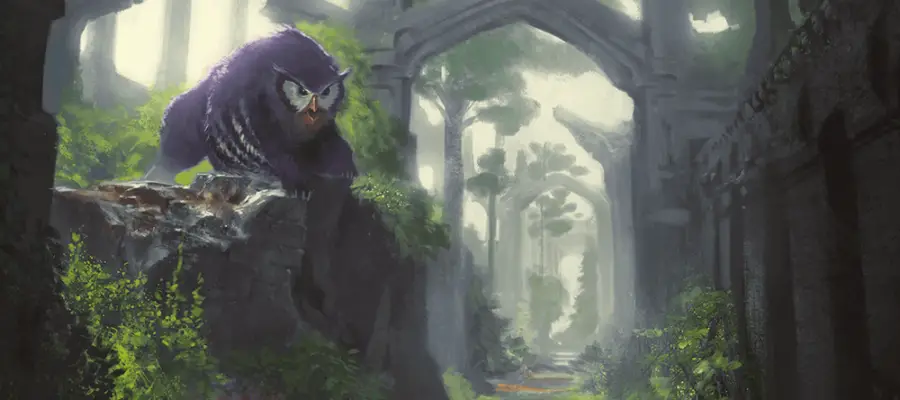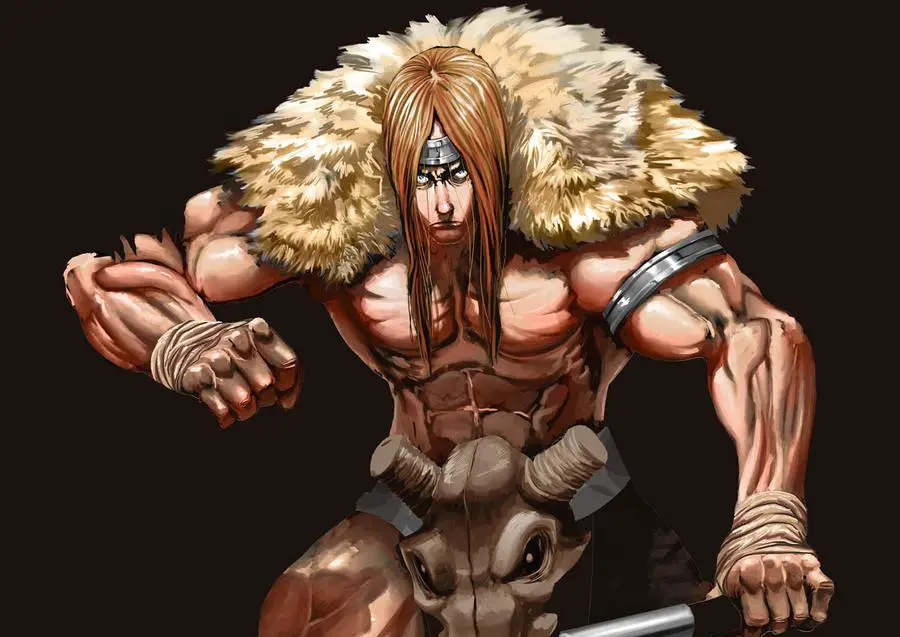Featured images for TTRPG worldbuilding guide credit to Wizards of the Coast’s book Princes of the Apocalypse.
Disclaimer: This article contains affiliate links that add gold to our coffers.
Building your own universe is a major undertaking with many, many parts to it. Due to the breadth of that process, this article will only focus on the broad order and organization of the cosmos and some important fundamental forces that every D&D or TTRPG world needs. This guide will give you the bare necessities for you to make a cosmology compatible with base 5e. It covers creating your gods, your magic system, and your planes of existence.
TTRPG worldbuilding does not need to be daunting! Let’s explore the broad concepts that you’ll want to cover.
A Word of Caution for TTRPG Worldbuilding
One thing to always keep in mind when worldbuilding is balancing your prep time. While some campaigns may dive deep into the lore of your world, most don’t. Instead of deciding the process of apotheosis, for instance, would it be a better use of your time to focus on what’s immediately ahead for the next session or to focus on creating interesting NPCs that your players will interact with? This is especially true if you have limited prep time every week.
Keeping that in mind, it is always helpful to have a rough idea of what the cosmos look like, even if you don’t expect your campaign to head that direction. Players can always surprise you, and having something prepared can delight them by making the world feel bigger than they expected. Also, If you’re like me, you find worldbuilding fun, and this article can give a bit of guidance to make that process less daunting.
Know Your Vibe
First, know how much detail you need and what direction your cosmos will be going in. For a low fantasy game, you may want to keep much of your universe shrouded. The cosmos may be something that no scholar or priest is sure of, so you should have the specifics remain a mystery. Conversely, if you expect your players to be interacting with the gods and exploring other planes, you probably should create specific rules for traversal and how the broader universe functions.
Remember, as a fantasy world, most anything can be explained by magic or the gods. Science is more of a guideline when developing your cosmos. This especially comes into play with celestial bodies, like stars, the moon, and the sun. When developing your cosmology, you might want to consider whether these generally mimic how they function in the real world or whether there are magical aspects to them. For example, the sun could be a plane of existence moved across the sky by the gods. The Material Plane could be a flat earth, square earth, round earth, or infinite earth. These sorts of questions can help you create a more fantastical world that incorporates the cosmos directly into what your players would experience on a day-by-day basis.
Gods and Higher Beings – TTRPG Worldbuilding
D&D generally functions on the core assumption that gods are real and interact directly with the earth. While you can change that assumption, you do need to consider how the gods interact and influence your world. This section will help you create your own belief system or pantheon that’s compatible with D&D 5e.
Types of Beliefs and Religions

The Dungeon Master’s Guide has a guide for choosing the type of religion you may want. I’ve created a list with those and other ideas below to help you develop your own. You may also blend these together, creating multiple different systems and religions existing alongside each other, depending on what would make sense for your world.
Pantheon Styles
- Loose Pantheons: a type of polytheism with a vast multitude of deities, where people worship whoever makes sense for them in the moment. Deity usually has a specific realm or concept that they rule over (e.g. the god of wind, the god of magic). This is the default system for D&D.
- Tight Pantheons: a type of polytheism with a smaller number of deities who are all worshiped, though not always equally.
- Racial Pantheons: in DnD, many races have their own race-specific pantheon or god who created that race and who the race generally worships (dwarfs have Moradin, elves have Corellon, orcs have Gruumsh).
Belief Systems
- Mystery Cults: this is a secretive religion with initiation rites. They are usually focused on one deity or a small handful of deities. These are more intimate than other polytheistic religions and are focused on the individual’s relationship with the divine.
- Monotheism: this system worships a singular god. This could also have demigods or saints that are revered but not necessarily worshiped. Alternatively, the singular god could have many different aspects or faces that are worshiped as separate forces despite being the same god.
- Dualism: this system is focused on two diametrically opposed beings or forces. One of these forces is often considered bad, though some systems believe in a balance between the two. Examples include good and bad, law and chaos, light and darkness, and matter and spirit.
- Animism: this is the worship of spirits, which inhabit all parts of the natural world. Some of these spirits may be powerful enough to be godlike. Usually, people pay homage to all spirits equally, but rarely they may focus on one or a few spirits.
- Forces and Philosophies: in this, there are no deities or cognitive beings, and the forces or philosophies tend to be revered rather than directly worshiped. In this system, it could be that people gain magical abilities from their devotion, or it could be that there are impersonal forces that fill the spaces of gods.
- No Gods, Spirits, or Forces: whatever force or being that created the universe is long dead or departed. In this case, elementals, fey, aberrations, devils, demons, powerful sorcerers, and other similar creatures or beings may mimic gods, forming their own followings, but they are not actually divine or possess the ability to take souls to an afterlife (or at least, a heavenly afterlife).
Fleshing Out the Divine – TTRPG Worldbuilding
You may want to create specific rules for your gods and powers. If your adventure plans don’t feature the gods, then this section may not provide as much use to you. Focus on whatever feels important, and remember that some of this may be unknown or shrouded in mystery.
- Where do divine beings derive their power and abilities from (such as: from worship, from their own skills/magic, from their realms, from the universe)?
- Why do they want followers or worshipers, if they even do at all? Why do they grant power to their worshipers (such as paladins and clerics)?
- Is there a creation myth? Are there multiple creation myths from different groups?
- Do the gods directly interact with the world or with their followers? Do they choose intermediaries? Do they guide religions set up in their name?
- What makes the gods divine? Can mortals ascend to godhood? Demigodhood? Can gods or forces be killed or trapped?
- How does the afterlife function in your world? See my article on the afterlife for how 5e handles it to serve as inspiration for your world.
Choosing Your Gods
There are several different ways to go about this. The first is just stealing a fantasy pantheon that already exists or picking and choosing random gods from a mix of different fantasy pantheons (something I often do). Some systems that work right out of the box are:
- Forgotten Realms (D&D, found in the Player’s Handbook, page 294)
- Grayhawk (D&D, in Player’s Handbook)
- Eberron (D&D, in Player’s Handbook)
- Dragonlance (D&D, in Player’s Handbook)
- Golarian (Pathfinder)
Historical Religions for Inspiration
Alternatively, you can borrow pantheons from historical religions from the real world. This may require a bit more leg work to make them fit properly. However, Wizards of the Coast took some of the work out for the Celtic, Egyptian, Greek, and Norse pantheons by creating fantasy interpretations of them. These lists can be found in the Player’s Handbook on pages 298-299.
Other historical religions you could steal/pull inspiration from (links are to their Wikipedia pages):
Finally, you can create an entirely new religion. The Dungeon Master’s Guide gives a suggestion for a starting place, which is to make sure there is a god for each kind of Cleric Domain. I’ve collected all domains from the various expansions below to help give you an idea of the ideas and concepts your pantheon should cover, though note that many of these domains can very easily fall under a singular god or force:
- Arcana
- Knowledge
- Death
- Grave
- Light
- Life
- Nature
- Peace
- Tempest
- Trickery
- Twilight
- Order
- War
- Forge
- Fate
One other thing you should consider is how and from where paladins, clerics, and druids derive their magic. Do paladins have to swear an oath to a specific god, a specific concept, or do they gain power from their own devotion? Have clerics required special ceremonies; do they have to be chosen, or are all priests clerics? Do druids derive their power from a god or being of nature, or do they get their power from primal power sources? Deciding how these various classes derive magic from deities and forces is vital to your players feeling connected to your belief system.
Magic✧・゚: *

Base D&D has three loose types of magic: arcane, divine, and primal. Arcane magic is drawn directly by interfacing with the Weave and is the kind of magic that wizards, sorcerers, bards, artificers, and sometimes warlocks draw upon. Divine magic comes from gods and celestials, which clerics, paladins, and sometimes warlocks use. Finally, primal magic, derived from nature itself (which isn’t explicitly stated in 5e but is in playtest material for OneD&D), is what druids, rangers, and sometimes barbarians use. On page 205, the Player’s Handbook describes primal magic as divine magic, but players seem to generally have made their own distinction between the two.
Consider how you want magic to be used and differentiated in your own universe. You could copy the three basic types or have less or more. Are they different and distinct magics or just various flavors of the same power, descriptors of how one draws upon raw magic? In general, you should consider the various ways that the different classes use and call upon magic and base your magic system on that. These types are:
- Artificer: tool-based magic
- Bard: song-and-speech-based magic
- Cleric: divine-based magic
- Paladin: oath-based magic
- Druid: nature-based magic
- Ranger: nature-based magic
- Sorcerer: birthright-based magic
- Warlock: pact-based magic
- Wizard: knowledge-based magic
There are also classes that can call upon extraordinary feats far beyond normal human capabilities, such as barbarians, monks, and mystics (psychics). You should consider whether these classes are explained by physical laws or whether they also call upon some level or type of magic to do their feats.
Planes of Existence and the Origins of Creatures
This, in my opinion, is the most complicated part of creating a universe during TTRPG worldbuilding. Keep in mind that your world may not have a strict order to the different planes, or even have different planes at all. My article on the basics of 5e cosmology can give you an idea of what planes 5e has. Additionally, page 44 of the Dungeon Master’s Guide has a list of cosmological models that can help guide you. The DMG also has a list of what you absolutely need in order to have a cosmological model that is compatible with D&D 5e. I’ve adapted this list by including details and ideas that I believe were missing to give you a complete list for your cosmological needs.
Planar Origins and Travel
- A place of origin for fiends.
- Base D&D has three types of fiends: yugoloths, demons, and devils, all being from different Lower Planes and having different functions (yugoloths are mercenary, demons are destructive, and devils are basically lawyers).
- A place of origin for celestials.
- Celestials are typically the servants of gods and come from the Upper Planes, but the monster type could easily be repurposed.
- An origin for elementals.
- D&D has the elemental planes (or a singular plane of elemental chaos) for elementals, but these creatures could also spring from other places or for other reasons.
- A place for deities.
- Typically, this is the realm or realms that the gods reside, if they’re separate from the Material Plane.
- A place for the afterlife.
- This is usually the same place as the gods and fiends.
- An origin for aberrations.
- Aberrations usually come from corrupted magic or from elder gods and are alien beings that don’t mesh with the fabric of the natural world.
- An origin for fey.
- Typically, fey come from the Feywild, a plane which is like the Material Plane or connected to the Material Plane but is wild with nature and magic.
- A way to travel between these places, which may be separate planes.
- A way for creatures and spells that use the Astral Plane and the Ethereal Plane to function.
- The Ethereal Plane is used by ghosts, the Phase Spider, and the spells Etherealness and Blink. The Astral Plane is used by the spell Astral Projection and by spirits passing into the afterlife.
Begin Your TTRPG Worldbuilding!
There’s a lot more that goes into TTRPG worldbuilding, especially when it comes down to granular topics like politics and specific religions. However, you should now have the high-level concepts you need for your universe to make it work with D&D. If you’re still struggling with ideas, remember that there’s no shame in filling in the gaps with base D&D concepts or stealing directly from video games and books.
What TTRPG worldbuilding tips and tricks have you discovered? Cast Message in the comments to tell us about them.




